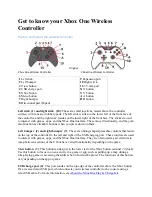
YASKAWA
TOEPYAIGA8002B GA800 Drive Programming
439
The overload tolerance decreases as motor speed decreases because the cooling fan speed decreases and the ability of
the motor to cool decreases in the low speed range.
The overload tolerance characteristics of the motor change the trigger point for the electronic thermal protector. This
provides motor overheat protection from low speed to high speed across the full speed range.
Load Tolerance
Cooling Capability
Overload Characteristics
(at 100% motor load)
This motor is designed to operate with commercial line
power. Operate at a 50 Hz base frequency to maximize the
motor cooling ability.
If the motor operates at frequencies less than commercial
line power, the drive will detect
oL1
. The drive triggers a
fault relay output and the motor coasts to stop.
■
L1-02: Motor Overload Protection Time
No.
(Hex.)
Name
Description
Default
(Range)
L1-02
(0481)
Motor Overload Protection
Time
Sets the operation time for the electronic thermal protector of the drive to prevent damage to the
motor. Usually it is not necessary to change this setting.
1.0 min
(0.1 - 5.0 min)
Set the overload tolerance time to the length of time that the motor can operate at 150% load from continuous
operation at 100% load.
When the motor operates at 150% load continuously for 1 minute after continuous operation at 100% load (hot start),
the default setting triggers the electronic thermal protector.
shows an example of the electronic thermal protector operation time. Motor overload protection operates
in the range between a cold start and a hot start.
This example shows a general-purpose motor operating at the base frequency with
L1-02
set to 1.0 min.
•
Cold start
Shows the motor protection operation time characteristics when the overload occurs immediately after starting
operation from a complete stop.
•
Hot start
Shows the motor protection operation time characteristics when overload occurs from continuous operation below
the motor rated current.
Figure 2.122 Protection Operation Time for a General-purpose Motor at Rated Output Frequency
V/f
CL-V/f
OLV
CLV
AOLV
OLV/PM
OLV/PM AOLV/PM CLV/PM
EZOLV
















































